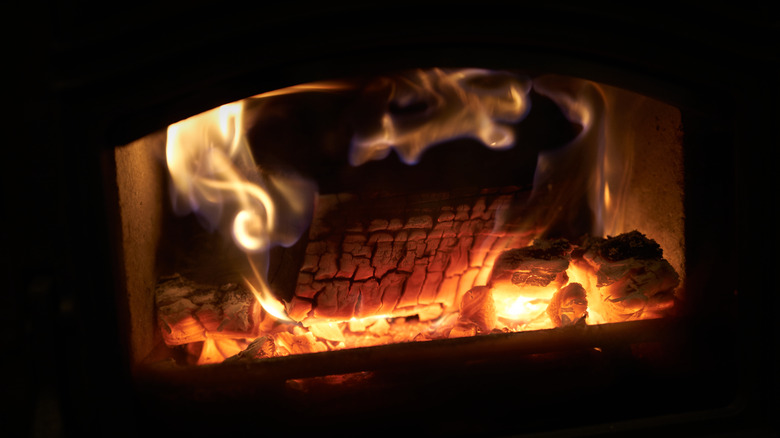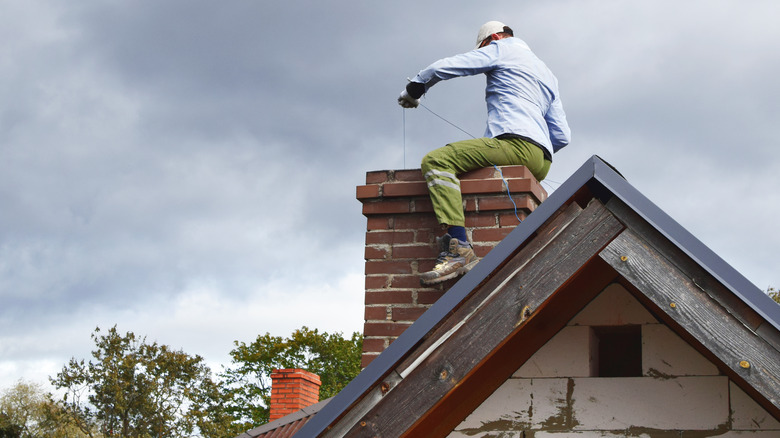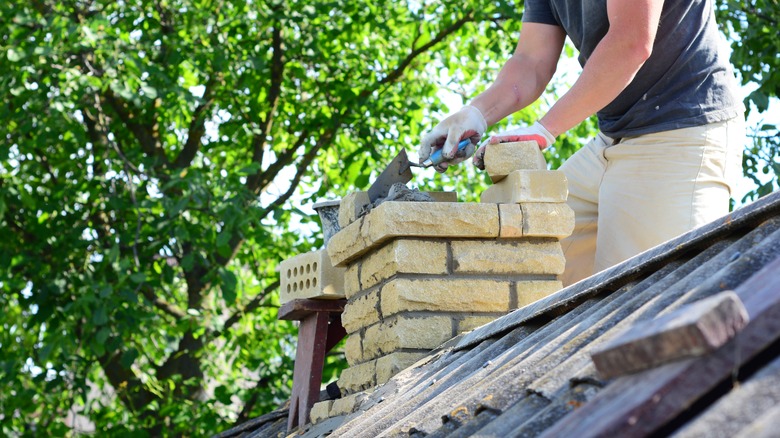How Borax May Potentially Help Stop A Chimney Fire Hazard Before It Starts
Chimneys are some of the most prominent fire hazards. In fact, there are approximately 25,000 chimney fires in the U.S. annually, resulting in almost 125 million dollars in property loss. Chimneys operate by allowing hot air to rise through a cold vented space, creating an escape for flame smoke. As a result, our homes are susceptible to the multiple fire hazards that chimneys can create, resulting in solutions like placing a balloon in your chimney to keep the house warmer while preventing airflow problems. There is, however, an effective solution that may be tucked inside one of your kitchen cabinets: Borax.
Most chimney fires are caused by the phenolic liquid of creosote, the consistency of which is thick, oily, and extremely flammable. When firewood has reached the end of its use, the liquid that has built up on the sides of your chimney turns into a sticky solid known as creosote. As the product continues to accumulate through multiple fireplace fires, it's susceptible to catching on fire and, as a result, affects the safety of you, your family, and your home. Borax, which is a popular fire retardant, may be able to rid you of any future fire hazards. It isn't an alternative to professional inspection and cleaning, but rather a preventative safety measure. Let's dive in.
How to use Borax for your chimney
There are a number of important reasons to use Borax, like exterminating a cockroach infestation or deterring indoor rodents. According to Borax, however, flame risk can be mitigated by suppressing smoke formation, adding an insulated layer, and continuing to uphold household properties. To get started on using Borax for your chimney, mix 4 cups of Borax with 1 cup of salt to effectively activate the mixture. Once the mixture is created, light a fire in the fireplace and allow it to burn before pouring the Borax-salt mixture over the logs.
As the fire burns, the mixture will be absorbed by the smoke to clear any creosote that's harbored inside your chimney. In addition to Borax, there are creosote logs that can replace traditional firewood while loosening any hardened layers of creosote. While it isn't 100% foolproof, loosening any stubborn grime before introducing the Borax mixture can help completely and effectively remove build-up. Once the fire has finished burning, use a wire brush to reach the chimney and ensure all creosote has been removed.
How to prevent future chimney fire hazards
Moving forward, it's important to know how to prevent future fire hazards by keeping your chimney safe and clean. In terms of safety, using seasoned firewood that's been dried out for a long time will help produce 'clean' smoke that has less potential to be a fire hazard. It can also help to create proper insulation by warming the chimney flue before starting a fire. Having a warm chimney flue will allow the creosote to float through, rather than sticking to the sides of your chimney and creating a dangerous pathway for smoke. If you have the means, hiring a professional chimney cleaner can also help prevent future damage.
Other preventative measures include removing any decorum from atop the fireplace. Flammable accessories — such as tinsel, stockings, and other decorations — are better off being removed to ensure fire can't catch onto any materials besides wood. It may help to install carbon monoxide detectors around the house in case of an unexpected incident, regardless of season or inside temperature. As long as you're regularly keeping an eye on the fireplace, cleaning it monthly, and addressing any complications, Borax and salt should be an effective solution for fire hazards.


